Connecting the Pieces of the Rehab Puzzle
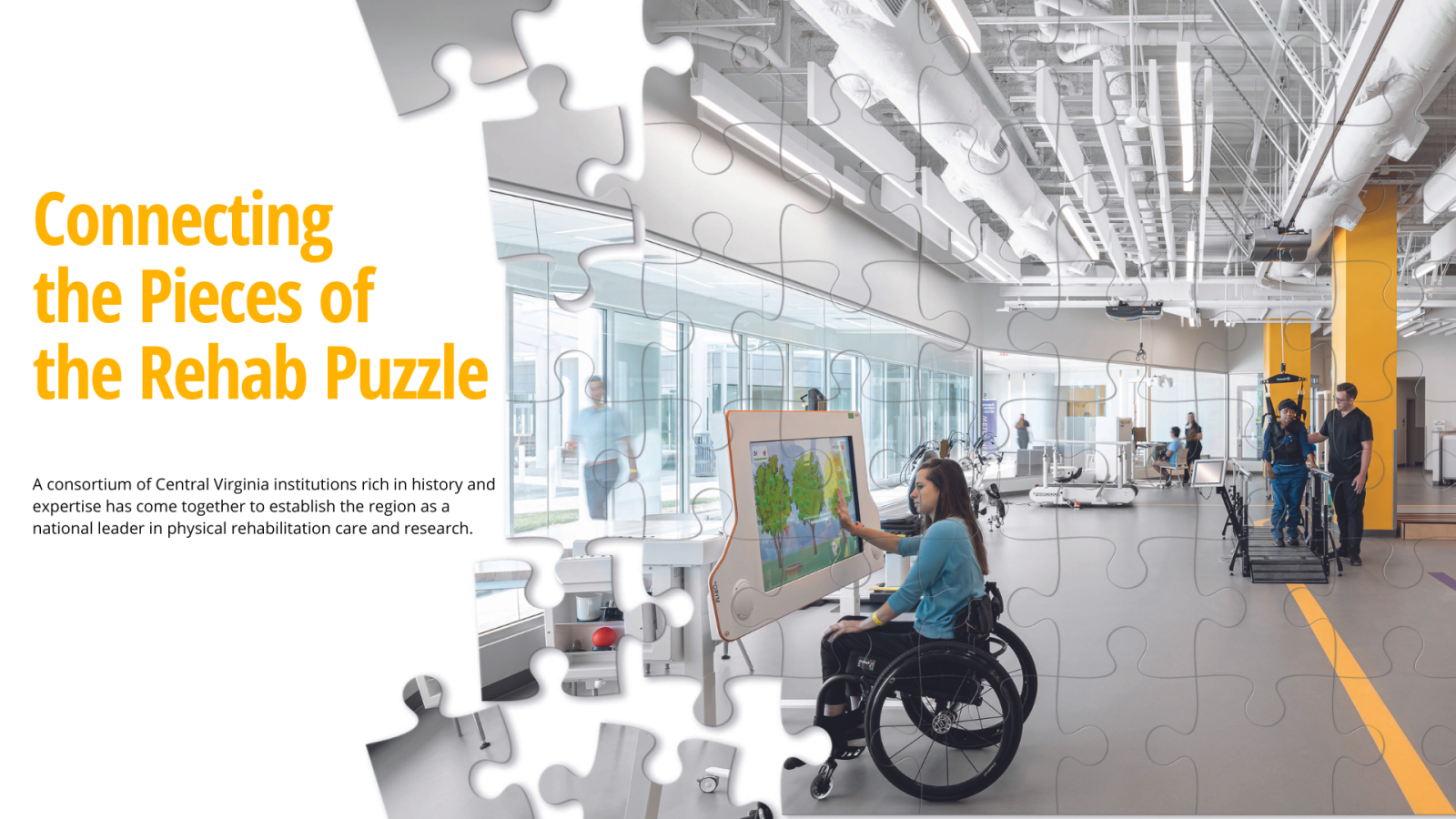
Editor’s Note: This story originally appeared in the summer 2022 issue of NEXT magazine. Our online version includes more stories about innovative research happening on the MCV Campus.
By Eric Peters and Jackie Kruszewski
Before 2020, physical rehabilitation beds at VCU Health were limited. If someone in Central Virginia suffered a spinal cord injury, they often had to travel hundreds of miles to Atlanta, Pittsburgh or Philadelphia to find the closest nationally recognized, comprehensive rehabilitation centers.
The distance wasn’t just a nightmare logistically for recently injured people and their families — it was a barrier to the best possible physical rehabilitation care for those who did not have the means to make such a long-distance, long-term journey.
These challenges could have been very real for Jordan Smalls, who on Labor Day 2020 was in a severe car accident. Emergency medical personnel thought he had died when they first responded to the scene. Smalls’ truck had flipped, and he had been ejected. Miraculously, he began breathing again and was transported to the hospital. After his acute care hospital stay, he needed to find an inpatient facility to begin regaining movement in his arms and legs.
The ingredients needed to help people like Smalls and bring a nationally renowned inpatient rehabilitation hospital to Central Virginia all existed alongside one another right here in Richmond for decades. But the region needed foresight, imagination and a partnership among major local institutions to bring it all together. When that happened, a facility emerged that was born of cooperation, prioritized patient outcomes over competition, and now serves the entire East Coast, matching or surpassing most of its peers across the country in patient outcomes and expertise.
Sheltering Arms Institute, a Collaboration With VCU Health
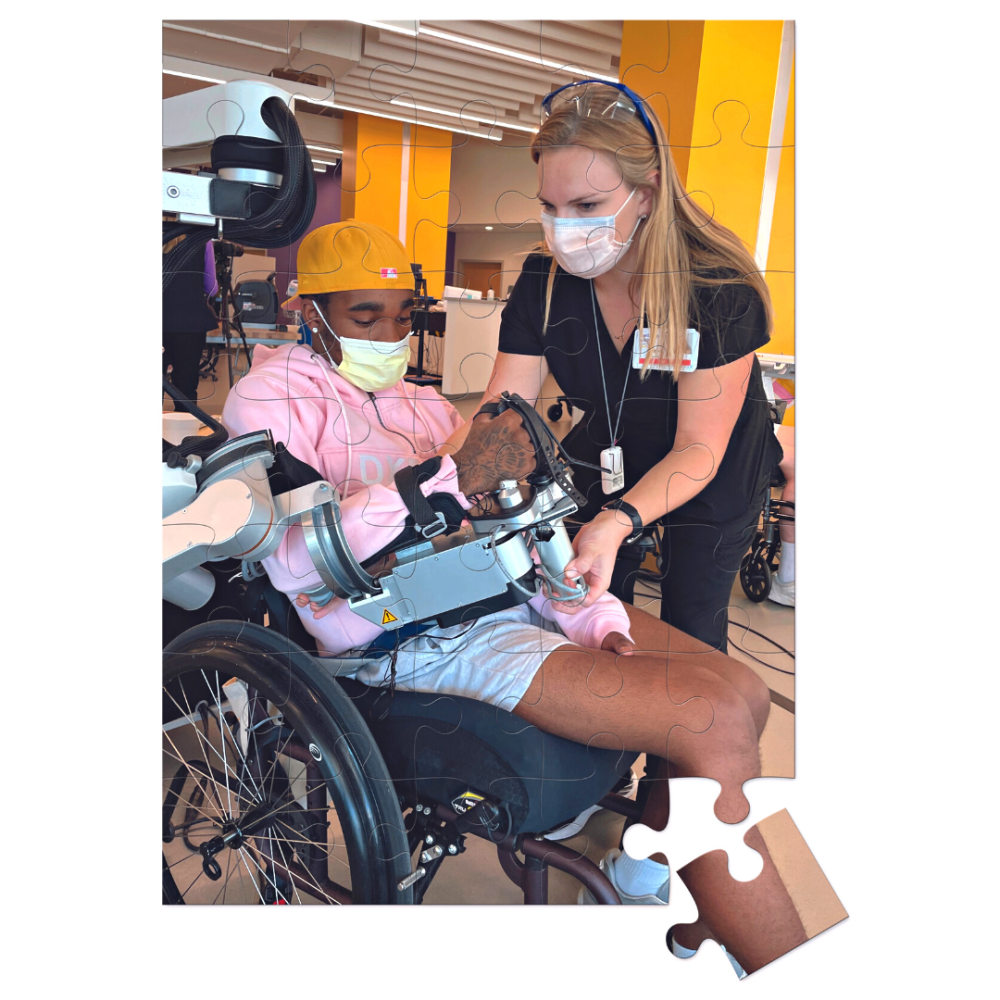
Titans of rehabilitation have always existed in Richmond — VCU and VCU Health, Sheltering Arms, and Central Virginia VA Health Care System (CVHCS, the local Veterans Affairs medical center).
With roots dating back to 1862, then formally established near the end of World War II, the VCU School of Medicine’s Department of Physical Medicine and Rehabilitation (PM&R) is one of the oldest and most prestigious departments of its kind in the country. The department is strengthened by its nearly 80-year partnership with the Veterans Affairs hospital CVHCS, which fosters world-class care for military heroes and community, promotes the research that makes that care possible, and provides the education to ensure the care continues to advance and evolve.
Existing alongside these institutions has been Sheltering Arms, which began more than 130 years ago as a hospital treating families in Richmond who could not afford to pay. In January 1981, Sheltering Arms became the first private freestanding physical rehabilitation hospital in Virginia. Today, the organization offers a full continuum of rehabilitation and health and wellness services.
More than a decade ago, these institutions began discussing and exploring how they could fit their individual pieces of the larger regional rehabilitation puzzle together to better serve the community. VCU and Sheltering Arms signed an agreement in 2016, and by June 2020, they opened a new rehabilitation hospital in Goochland — Sheltering Arms Institute.
The 212,063-square-foot, 114-bed inpatient rehabilitation facility brings together clinicians, scientists, innovators and technologists, drawing upon the strength of its partner organizations to provide exceptional care in one place for individuals who have survived strokes, spinal cord injuries, brain injuries and a variety of illnesses. With the opening of Sheltering Arms Institute, VCU Health moved most of its rehabilitation resources to the new hospital and now sends almost all of its rehabilitation patients to the joint-venture institute.
VCU entered into this partnership having held a model system grant for traumatic brain injury (TBI) since 1987. A model system grant is awarded by the National Institute on Disability, Independent Living and Rehabilitation Research (NIDILRR) to institutions that are national leaders in medical research and patient care. These institutions provide the highest level of comprehensive specialty services from the point of injury through eventual reentry into full community life. VCU was one of the first four original grantees for the program.
SAI brings together clinicians, scientists, innovators and technologists ... to provide exceptional care in one place for individuals who have survived strokes, spinal cord injuries, brain injuries and a variety of illnesses.
The VCU Model System for TBI provides comprehensive, coordinated inpatient and outpatient care through two complementary programs. The longest-running program is now centered at Sheltering Arms Institute since the organizations began their collaboration. The other program is centered at CVHCS. Both programs conduct research focused on improving care and quality of life for brain injury patients and their families. Points of emphasis include analyzing and improving the benefits of couples support and education, the effectiveness of teaching resilience for survivors, understanding caregiver resilience, and researching the long-term outcomes after brain injury.
One of the first priorities for the VCU-Sheltering Arms-CVHCS partnership was to add another area of national leadership to its repertoire of research and care. The new consortium immediately set its sights on earning an additional model system grant — one for spinal cord injury.
To reach that goal, there was a substantial 18-month planning and grant preparation effort among departments across VCU, SAI, CVHCS and community stakeholder groups. “During that time, we aligned resources and interests, mapped out potential projects, and wrote a competitive grant that we felt highlighted our research strengths and was highly congruent with local and national stakeholder priorities,” said Ronald Seel, Ph.D., executive director of the Center for Rehabilitation Science and Engineering (CERSE) in VCU’s PM&R department. “You’re not eligible to get an SCI model system grant if you don’t demonstrate a strong SCI continuum of care from acute to community, so the SAI partnership was essential. Our relationship with CVHCS was also an important component as that facility houses the largest SCI rehab unit in the U.S.”
In September 2021, the regional consortium of VCU, Sheltering Arms and the CVHCS earned federal designation as one of only 14 Spinal Cord Injury Model Systems Centers in the U.S. CERSE was awarded the grant and now leads the Virginia Spinal Cord Injury Model System.
“These grants are highly competitive, so to have both the TBI and SCI grants is a recognition about this partnership, our research capabilities and our leadership in the TBI and SCI fields,” Dr. Seel said. “If you’re a college sports fan, it would be similar to there being very few universities who have both top 15 football and basketball programs. The grants allow us to do more innovative research and more large data research in which the associated evidence can be translated into better clinical care and outcomes.”
With the marriage of the TBI and SCI model system grants, the rehabilitation and research partnership here in Central Virginia is one of only four centers in the nation to have the dual designation.
The partnerships, the collaboration and the research have all paid off for patients.

A Consortium for Care
More than 3,500 patients from 18 states have received care at Sheltering Arms Institute since it opened.
“The combined clinical expertise of VCU Health and Sheltering Arms makes this institute the most complex rehabilitation hospital in Virginia,” said Alan Lombardo, CEO of Sheltering Arms Institute. “We are the preferred site of rehabilitation care for spinal cord injury, brain injury and stroke patients. Additionally, we are able to care for patients who have had organ transplants, severe burn injuries, polytrauma and utilize ventilators. Our clinicians have already achieved functional outcomes for our patients that are in the top 15th percentile nationally.”
There are four units in the hospital to support the variety of its patients’ needs. The 9,251-square-foot main therapy gym and three satellite gyms are equipped with everything from full-body assistive devices to fine motor skill development tools. The Motek Rysen, for example, is a 360-degree overground assistive walking device that is the first of its kind anywhere in North America. Instead of track-based linear movement, it allows free range of motion to support activities like basketball and Ping-Pong. On the other end of the movement spectrum is the Neofect Smart Glove that helps patients regain fine motor skills, as well as a robotics area, virtual reality technology and much more.
Sheltering Arms Institute coming to fruition has made me proud as a Virginian, having seen two competitive entities join together to afford people with disabilities the opportunity to recover.
Richard Bagby, Executive Director, United Spinal Association of Virginia
Tools are integrated throughout the entire hospital so patients can practice rehabilitation techniques outside of the gym, including the Bioness Vector Elite, a track-based, bodyweight support system located inside patients’ rooms and throughout the hallways to help patients practice walking to and from most places in the facility.
All of this was designed specifically for rehabilitation care with input from former rehab patients, caregivers and, of course, health care professionals. One of the rehab patients who provided input is Richard Bagby, executive director of United Spinal Association of Virginia.
“From the outset, I was impressed with Sheltering Arms and VCU’s intentionality in including a broad spectrum of stakeholders so that they could ensure that all perspectives, from clinicians to past patients to community partners, would be heard in an effort to make Sheltering Arms Institute as beneficial of a facility and community as possible for everyone,” he said.
“This set the tone to achieve the best possible experience for SAI patients in both comfort and rehabilitation following a life-altering injury or illness,” Bagby said. “The product ended up being a unique approach to universal design in that each space or element of the building is accessible to all, no matter functional level, while also being part of the rehabilitative process.”
All patient rooms are single-occupancy and meant to be a “home away from home,” while maintaining the functionality of a traditional hospital room. They include ceiling lift systems, sliding barn doors to the bathroom, furniture that can be converted into beds for guests, roll-in showers, and flooring that is both comfortable for staff to stand on for long periods of time and suitable for a new wheelchair user.
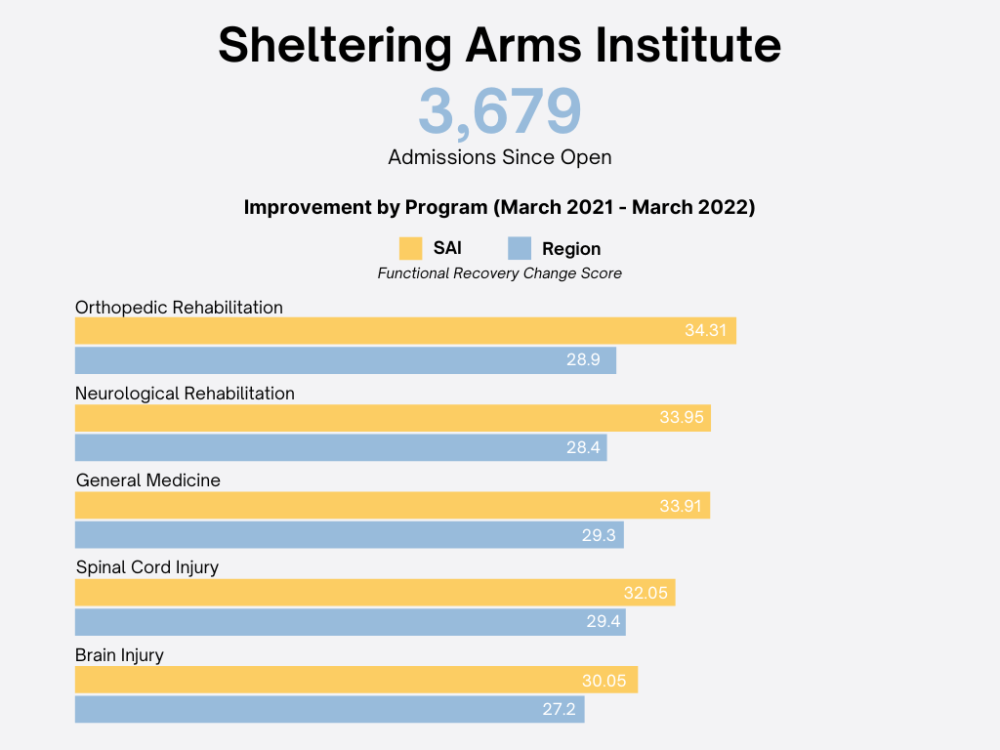
“Sheltering Arms Institute coming to fruition has made me proud as a Virginian, having seen two competitive entities join together to afford people with disabilities the opportunity to recover independence and normalcy in their lives following a devastating injury or illness,” Bagby said. “Professionally, as the executive director of a nonprofit organization serving Virginians living with SCI/D, the new institute has given me hope and assurance that together we can continue building an inclusive community that benefits disabled and able-bodied.”
All of the planning and all of the technology have made a difference for patients like Jordan Smalls, who fortunately found Sheltering Arms Institute after his car accident and acute care hospital stay.
“When I came in, I could not walk,” Smalls said. “It is very hard to cope with this. A lot of days I just cried, and at night I couldn’t sleep, but when I came to this hospital I felt way better because I was getting movement [in my legs]. I feel some sense of hope, but it’s really hard. Don’t ever get in your head that you want to give up. Keep on fighting, because every day you’re going to get better, and this hospital really helps you get better.”
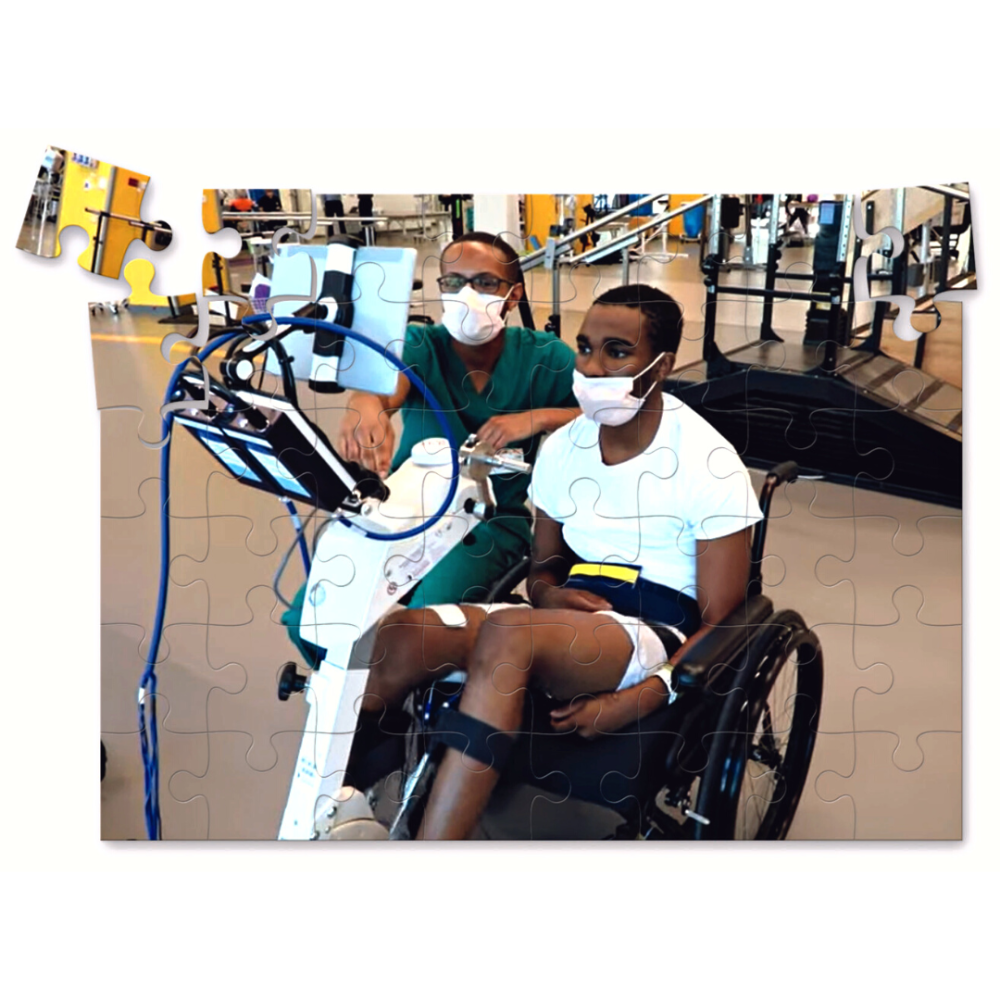
A Consortium for Research
VCU is the anchor in the regional rehabilitation partnership, supplying some care providers and researchers at all of the locations and leading the collaborative research enterprise — CERSE — that spans all three organizations.
“From a neurotrauma perspective for inpatients and outpatients, you have here in Richmond one of the best continuums of rehabilitation care that you can get any place in the U.S.,” Dr. Seel said. “Sheltering Arms Institute, the VA and VCU Health all deliver incredible clinical care. Then they all have a tight relationship with our center that brings together interdisciplinary researchers across VCU and the VA to test innovation, new technology, robotics, behavioral interventions and even analyze big data to understand what interventions might work better.”
Dr. Seel gives credit for this partnership and these accomplishments to many people, dating back to VCU’s Harold Young, M.D., and his pioneering leadership in acute traumatic brain injury research in the 1980s and 1990s, and continuing through David Cifu, M.D. Dr. Cifu chairs VCU’s PM&R department and is associate dean for innovation and systems integration, overseeing VCU, VA and Sheltering Arms Institute clinical and research partnerships.
Since 2017, CERSE has expanded faculty and staff, earned $75 to $80 million in new grant funding, and been designated as a VCU-wide center, collaborating with researchers across 24 VCU departments and six institutes and centers.
Today, CERSE funding totals $115 million, advancing its mission to connect researchers across the three institutions and accelerate rehabilitation breakthroughs that empower people to overcome barriers and thrive.
“During my journey living with quadriplegia since I sustained a traumatic spinal cord injury 13 years ago,” Bagby said, “as well as through my experiences administering the United Spinal Association of Virginia, I grew more and more aware that Richmond has long had all of the variables in practice which make up a premier rehabilitative experience, including knowledge, expertise and technology. Unfortunately, they were scattered across the region. What the selfless collaborative effort put forth by Sheltering Arms and VCU has done is meld the best of both systems together, while giving them an extraordinary state-of-the-sciences environment, which allows clinicians to reach their highest potential of professional practice. All of this culminates in the absolute best outcomes for Virginians and others as they now have access to the highest rehabilitative care without having to leave their community and support systems to seek out other facilities across the country.”
If you are interested in supporting leading neurotrauma care and research right here in Central Virginia, contact Nathan Bick, senior major gifts officer, at 804-827-0387 or nathan.bick@vcuhealth.org.
PATIENT PERSPECTIVES
Read a perspective of patient who is now participating in a clinical trial at Sheltering Arms Institute to improve his mobility and health.
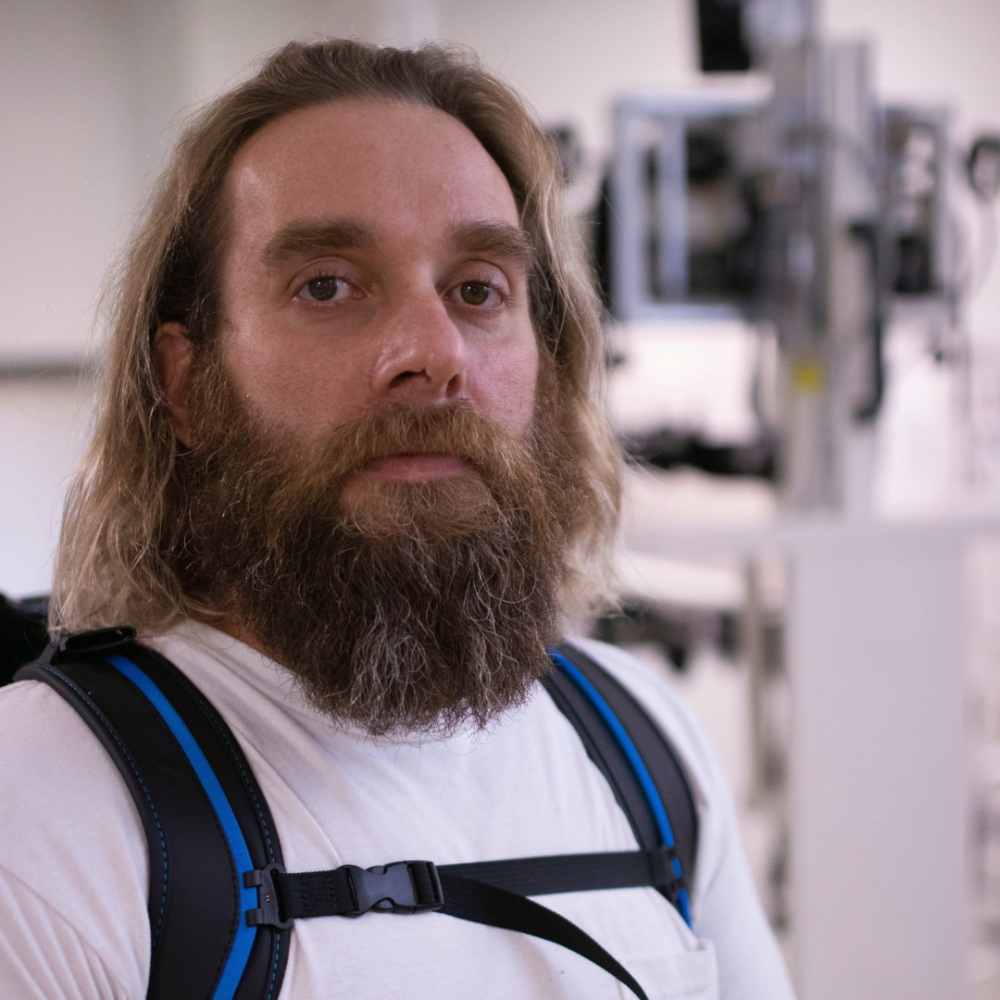
Make a Difference
Support physical rehabilitation care and research at VCU Health to help improve the lives of patients.